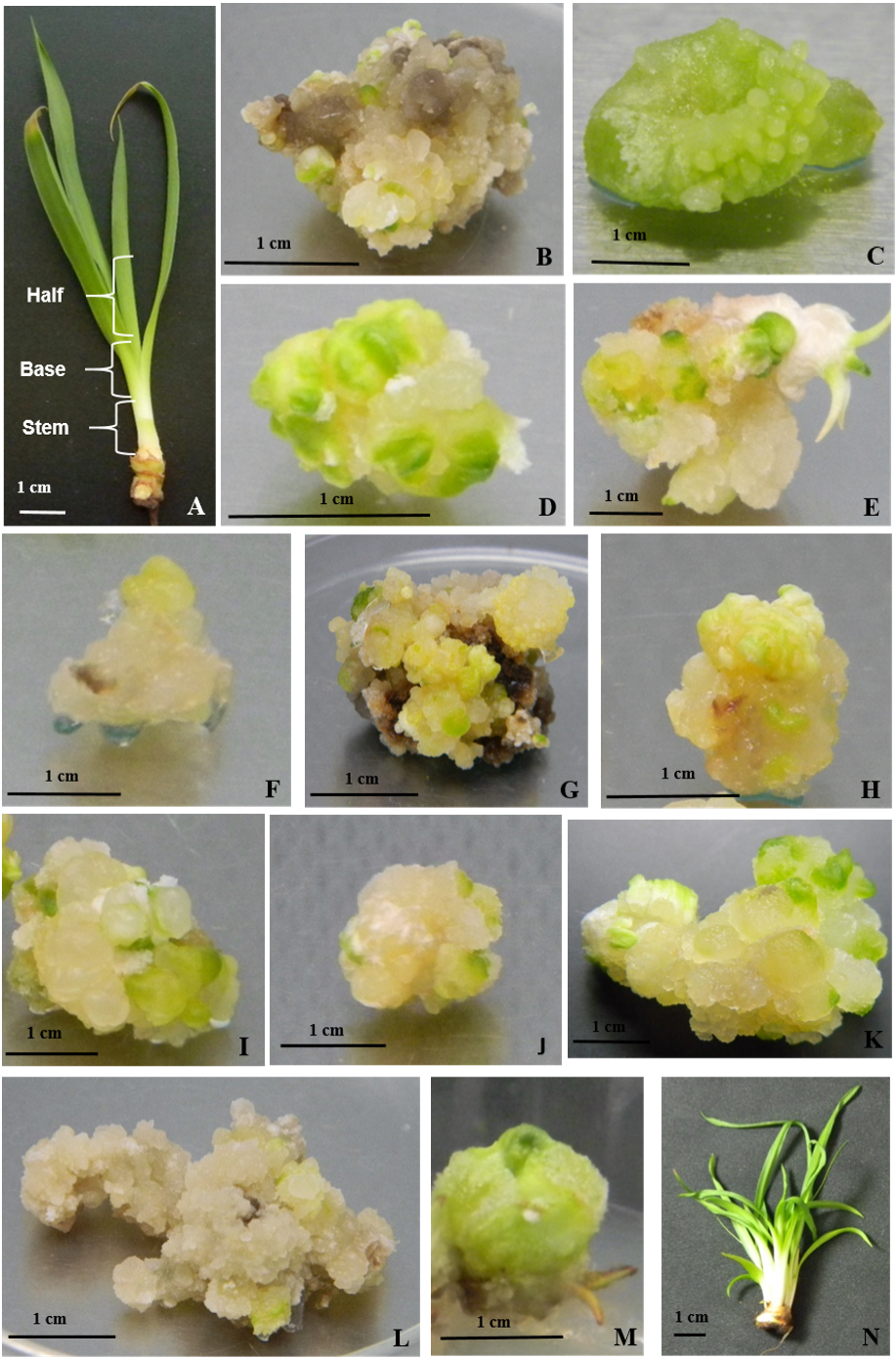 |
|
It has been demonstrated that some species of the Yucca genus are a source of metabolites with functional properties, as is Yucca carnerosana (Trel.) McKelvey with antifungal activity. This research aimed to induce the formation of callus tissue in Y. carnerosana, to know the growth kinetic, and to analyze the metabolite profile of the formed tissue and plants propagated under in vitro and ex vitro conditions. Callus induction was achieved using Murashige & Skoog (MS) medium supplemented with 4.4 µM benzyladenine and 4.1 µM 4-aminotrichloropicolinic acid (Picloram). The growth kinetics of callus tissue was characterized by a latency phase achieved in the second week of culture, followed by an exponential growth until the fourth week. The culture showed a specific growth rate of 0.0258 d-1; the doubling time was 26.866 days, and the growth index was 5.9091. The metabolite profile was analyzed using Ultra-High-Performance Liquid Chromatography coupled to Mass Spectrometry (UHPLC-PDA-HESI-Orbitrap-MS/MS). The chromatographic and mass spectral analysis allowed the separation and identification of 22 compounds in callus tissue, 26 in in vitro plants, and 27 in ex vitro plants. Our results indicate that the callus tissue and the in vitro and ex vitro plants of Y. carnerosana may be a source of metabolites of interest.
Keywords: UHPLC-MS, polyphenols, in vitro, growth regulators, Asparagaceae.
|
|
 |

